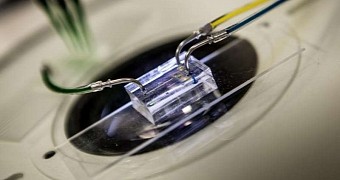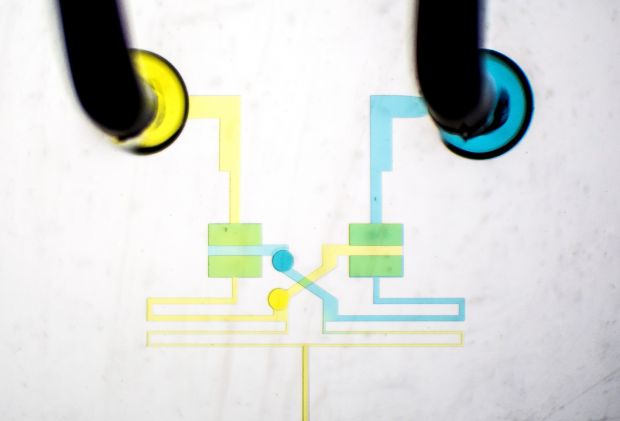Researchers at the University of Michigan managed to mimic a heartbeat outside of the body, mimicking fundamental physical rhythms like the heartbeat.
Developed as a "lab on a chip," microfluidic devices that can be extremely useful when performing complex laboratory functions in a tiny space.
Being an instant success in heartbeat mimicking, researchers have already started testing cardiovascular drugs and blood thinners, where blood flow and its accurate simulation can help develop new studies and medical solutions.
Apparently, cells will react more natural when subjected to the pulsing rhythms inside a body or when in motion, instead of the static environment of the lab. This way doctors will be able to test and simulate cell motion much more accurately before testing on live subjects.
Just to make an idea on how primitive heartbeat simulations were outside of a body before this new heart-on-a-chip arrived, doctors had to operate a syringe pump operated by a lab technician for a limited amount of time. The new device not only eliminated the human factor in simulating a heartbeat, but can also operate in infinitely longer amounts of time.
Perfection through simplicity
Also the chip itself is highly customizable, allowing the scientists to set different flow speeds on different channels to simulate the different speeds of blood movement on a septic patient blood vessel.
Developed by Biointerfaces Institute and Michigan Center for Integrative Research Critical Care, this advanced chip uses an intricate network of microscopic, gravity-driven channels, capacitors and switches to make liquids flow across it in an unlimited variety of pulses and flow rates. The chip operates much like an electronic processor in a computer, but it uses fluid instead of electricity.
It enables researchers to test new therapies on human cell samples that have been injected into the device, in an environment that successfully mimics conditions inside the body.
During the chip's manufacturing process, the Biointerfaces team will custom-design each chip to exact specifications, and afterwards it uses a combination of soft lithography and photolithography to mold the chip out of silicon rubber at a cost of only a few cents each!
Although the chip is not ready for commercialization, the team behind it will probably start sharing the design and research results with other scientists, on a noncommercial basis fairly soon.

 14 DAY TRIAL //
14 DAY TRIAL // 


